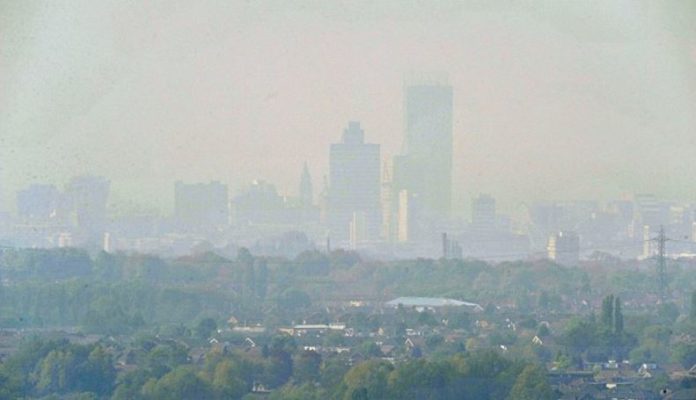More than one in 19 deaths in UK cities and large towns are related to long-term exposure to air pollution, according to new estimates in Centre for Cities’ annual study of the UK’s major urban areas – Cities Outlook 2020. That’s 25 times the national rate of deaths from traffic accidents.
The estimates vary significantly depending on where people live. For example, the proportion of deaths related to the deadly toxin PM2.5 is highest in cities and large towns in south eastern England such as Slough, Luton and London, where an estimated one in 16 people die from exposure.
Meanwhile cities in Scotland and northern England see the smallest proportion of PM2.5-related deaths. Aberdeen is the city with the lowest proportion, at one in 33.
The deadly levels of PM2.5 are currently legal in England, Wales and Northern Ireland, despite breaking the World Health Organization’s air pollution guidelines.
Some 62% of roads monitored in UK cities also exceed WHO guidelines for PM2.5. In 19 cities, all monitored roads are breaching the WHO guideline potentially exposing 14 million people to the pollutant on a daily basis. If WHO’s guidelines were enshrined in law across the UK every single monitored road in 19 cities and large towns in England would breach legal limits.
Transport is a significant, but not sole contributor to air pollution; burning fuels is also a major cause. For example, half of deadly PM2.5 toxins generated in cities and large towns come from sources such as wood burning stoves and coal fires. Not all of it is locally generated – some in the south of England is blown in from continental Europe.
Half of local authority leaders polled by Centre for Cities highlighted the environment as a major concern, but progress has been slow and they must do more to prevent more avoidable deaths from air pollution.
The report says that the Government should do more to help local authorities battle the problem recommending that it should adopt the WHO’s stricter guidelines on PM2.5,as the Scottish Government has already done,and make a legally binding commitment to meet this by 2030 at the latest.
Central Government the size of the Clean Air Fund to £660 million to help cities fight air pollution and provide
financial incentives for cities to improve air quality through the establishment of an Environmental Impact Bond.
Andrew Carter, Chief Executive of Centre for Cities, said:
“More than half of people in the UK live in cities and large towns. And while they offer people good employment and lifestyle opportunities Cities Outlook 2020 shows that they also having a damaging effect on their health, with air pollution killing thousands of people living in cities every year.
“Politicians often talk tough on addressing air pollution but we need to see more action. Cities should be at the centre of the fight against toxic air and councils should take the steps needed, including charging people to drive in city centres and banning wood burning stoves.
“To help the Government needs to provide extra money and introduce stricter guidelines. The deadly levels of polluted air we’re breathing are legal across most of the UK. This needs to change. As a matter of urgency the Government should adopt WHO’s stricter guidelines around PM2.5 emissions. Failure to act now will lead to more deaths.”







